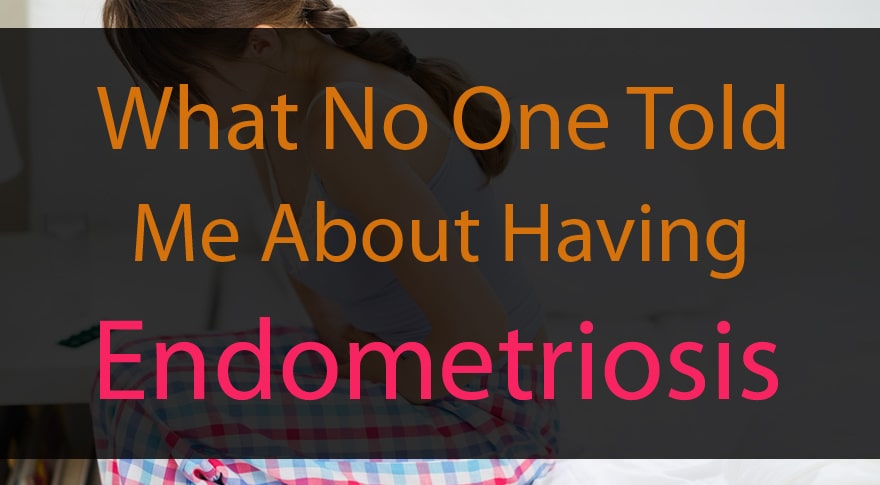God forbid, if you are going through the initial stages of endometriosis, the first question that’ll hit your mind is, “is endometriosis painful?” And the answer is, yes!
In a matter of only a few minutes, your day can be upside down from feeling absolutely fine to be screaming with intense pain. And that can be an absolute norm if you are living with endometriosis. Without proper guidance, you may even have to isolate yourself completely to deal with this tearing pain, and that too, while dealing with overall endo struggle. Thankfully, we are living in a digital era where connecting with people is easier like never before. And a lot of endo warriors are coming forward to share some lesser-known facts about endometriosis.
You can easily find a lot of solidarity around numerous online platforms, and people are now talking very openly about endometriosis. It helps you feel that you are not alone. There are millions of others across the world going through or have gone through the phase you are in right now. There can be a lot of similarities in the battles and struggles against this agonizing condition, and when you get to know about people suffering from something similar, you get a ray of hope, you feel that – “okay, someone is battling it out, and why can’t I do the same?”
If you want that very important space of comfort, we’ve got you covered! Whether you are struggling with endometriosis for so many years, or you’ve just discovered the culprit behind that constant, annoying pain. Here are some very important facts about endometriosis that no one has told you, ever!
Is endometriosis painful? Yes, it can be incapacitating!
It can be easy, even for those who never experienced endo pain, that pain is one of the classic symptoms of endometriosis. But they can never understand, how debilitating it can be!
Also Read: Breast Cancer Symptoms You Don’t Know About
Lara Parker, an advocate working for creating awareness against endometriosis says, “It’s not only about the pain in abdomen or pelvis”. She describes her condition as a “monster”, and shares very candidly about her struggles as “It has made my life hell in every possible way”.
When someone goes through an absolutely unexpected level of pain, they get the nerves of steel in return. “I’ve got a superpower that just kept me floating in my life because it was almost impossible to live with such kind of intense pain” explains April Christiana, using social media platforms very successfully to create awareness against endometriosis. She also organizes a brunch now and then in New York to help people who are in search of some much-needed support to fight against endometriosis.
But, at times, people also start to learn, how to get used to that unbearable pain. They know that, in real life, that kind of pain can’t be counted as “regular”! Maggie Bowyer felt that she had to go through that pain, no matter what, even when the pain scale scored 9 out of 10 and she must have rested. “At first, I thought, feeling that type of pain was normal for my body, but now, I know that I can take some break! I wish I knew that a few years ago.”
Leah Jones shares her experience, “You won’t find anything abnormal in your physique, but there is! People get used to swallowing their pain and moving forward!”
And that’s the bottom line when it is about the intensity of pain. Even though suffering from pain is normal in the case of endometriosis, but it is not “normal”. It is immensely intriguing, it is uncomfortable like anything, and it takes you through something you never experienced in your life.
Symptoms are not only visible during your periods
“I had to deal with the symptoms of endometriosis even without my periods, like a lot of other ladies!” Yes, that exhausting pain is more common during periods (Lesions of endometriosis are expected to bleed during periods, which can cause more fatiguing pain). During her former job, Alishia Rahn was forced to work from home, at least for the first few days of periods to manage those cycles of intense, unbearable pain. With time, her colleagues started to behave strangely and negatively, and she had no other option, but to leave the company!
But endometriosis can even go beyond that one month. And Christiana was aware of this reality. She felt very, very annoyed when people compared endometriosis with “some very painful periods”. No, No. No! “Our cramps never ask before making life hell,” she says with a lot of frustration.
In a real scenario, you may feel pain while sexual intercourse, when you are sitting in the toilet, while being physically active, or even at a random time. Also, endometriosis can even cause some other conditions like constipation, diarrhea, fatigue, and nausea, which can make your periods worst, and more importantly, these conditions won’t necessarily disappear after periods!
And, we haven’t discussed the biggest complication of endo as yet – infertility! Prolonged endo can also cause tissue scars or organ dysfunction that may reduce the chances of getting pregnant, and of course, it’s not only limited to when you have periods! Symptoms may include:
- Irregular and severely painful periods
- Deep cramping pain during sexual intercourse
- Painful bowel movements
- Pelvic and lower back pains
- Bleeding even in between periods
- Digestive troubles
- Infertility
What are the causes of endometriosis?
Unfortunately, it is hard to tell the exact cause(s) of endometriosis. But, according to researchers, a combination of factors can contribute to the development of diseases. They are:
- Menstrual problems like retrograde menstruation.
- Genetics, when the condition runs through the generations.
- The faulty immune system, especially when it is failed to destroy the remote endometrial tissue.
- Hormonal irregularities, primarily, of estrogen.
- In case of wrong or incomplete surgery, in case, if the endometrial tissues are moved improperly.
How is endometriosis diagnosed?
Unfortunately, the journey to a diagnosis can be both lengthy and frustrating. Usually, it takes about six to seven and a half years from the onset of symptoms to proper diagnosis! Depending on your symptoms and their severity, your doctor may advise for:
- Medical history: Your doctor will ask about family history and symptoms related to endometriosis. He/she will also do a proper health assessment.
- Physical examination: Particularly, pelvic examination to get a feeling of possible scars or cyst behind the uterus. At times, it can be a bit uncomfortable, because, your doctor may insert fingers or a speculum into the vagina for proper assessment.
- Ultrasonography: Abdominal or transvaginal ultrasound is preferred to display the internal images of your reproductive organs. Sometimes, an ultrasound may reveal cysts or scars, but it is not the most preferred method of diagnosing endometriosis.
- Laparoscopy: It is the only definitive method of properly diagnosing endometriosis. Your doctor can have a clear view of the surrounding tissues. And if the diagnosis is confirmed, the tissues are removed in the same procedure.
Different stages of endometriosis
There are four stages of endometriosis including:
- First, minimal stage
- Second, mild stage
- Third, moderate stage, and
- Fourth, Severe stage
Doctors determine the stage by complete assessment through amount, depth, size, and the location of endometrial tissue(s).
Can endometriosis cause cancer?
It is very important to know that endometriosis itself is NOT cancerous, and the symptoms mentioned above have nothing to do with the stages. They are absolutely irrelevant to the stages of endometriosis. Some women can have severe symptoms in the first stage itself, while some may do not have any even in the fourth stage.
How is endometriosis treated?
Currently, there is no proper treatment for endometriosis. Different combinations and variations of management can reduce the severity of symptoms and help you lead a much comfortable life. Here are some management options
- Pain medications: Paracetamol and ibuprofen are the most common anti-inflammatories and pain relievers. There are various other OTC medications but are not very effective in case of severe pains.
- Hormone treatments: Estrogen is sometimes responsible for promoting endometrial tissue growth as well as shedding. Doctors also reduce the growth of tissues as well as pain by limiting the hormone. Treatments like implant and intrauterine system, oral contraceptive pills, etc. can control the growth of estrogen hormones. However, various side effects are also associated with both types of hormonal treatments.
- Surgery: If you have very severe symptoms, your doctor may suggest surgical removal of endometrial tissues. Usually, laparoscopy and keyhole surgery are the preferred methods. If they don’t work, complete removal of the womb (hysterectomy) is suggested by the doctors.
THE MYTH BUSTER:
Endometriosis is not necessarily responsible for infertility. However, severely painful conditions can make pregnancy a huge difficulty. Doctors usually suggest avoiding pregnancy, especially in severe conditions. But there is nothing like you can’t conceive at all. If you are ready to deal with severe cramping pains and some other possible complications, you can opt for pregnancy, but only after a proper and detailed discussion with your doctor.
- To sum it up
Endometriosis can be immensely painful and make your life very, very uncomfortable. If unfortunately, you are also suffering from any of the symptoms mentioned above, get a comprehensive medical examination from an experienced medical practitioner. You may feel any or combination of these symptoms in other health conditions as well. Don’t reach to a conclusion based on self-assessment, whether it is about diagnosis or treatment.
References
https://www.self.com/story/life-with-endometriosis-facts
https://medichecks.com/blogs/news/all-you-need-to-know-about-endometriosis







